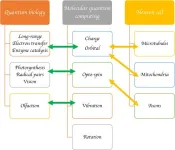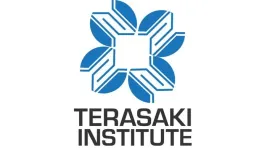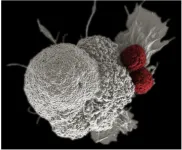(Press-News.org) Cardiac computed tomography angiography (CCTA or CTA) has emerged as a first-line tool for diagnosing, treating, and evaluating the prognosis of various cardiac diseases. In this special issue of JSCAI, "The Role of Cardiac Computed Tomography Angiography in Diagnosis, Treatment, and Prognosis of Cardiac Disease", experts detail the broad spectrum of uses of this imaging modality, acknowledging the role of this test in current clinical and procedural practice, including:
Risk stratification
Ruling out coronary artery disease in patients with chest pain
Assessing plaque morphology and hemodynamics of coronary stenosis
Planning percutaneous coronary and structural interventions
Cardiac surgical planning
Pediatric, infectious, and congenital heart disease
“We’re using CTA more and more for diagnosis, prognosis, and procedure planning. Since its launch two years ago, JSCAI has established itself as the premier journal for interventional cardiology. In addition to featuring prominent experts, this phenomenal special issue provides a platform for early- and mid-career superstars,” said Dr. Alexandra Lansky, MD, MSCAI, founding editor-in-chief of JSCAI and professor of medicine and director of Heart and Vascular clinical research at the Yale School of Medicine. “The special JSCAI issue allows us to delve into a specific interest area, bring more attention to that space, and encourage submissions from specialists who might not otherwise submit to JSCAI.”
In their opening editorial, guest editors Dr. Jonathon A. Leipsic, MD and Dr. Natalia Pinilla, MD, PhD encourage readers to experience the many diagnostic, planning, and prognostic possibilities that CCTA offers, as well as ongoing efforts to ease acquisition, improve image quality, develop dedicated analysis software, and incorporate artificial intelligence into the interpretation.
“We are at the point that CCTA technology is amazing, the image quality and additional information goes beyond anatomy, and now we are at an inflection point for the entire interventional cardiology community to understand the power and the potential of this technology. I don't think it's been incorporated in patient care as much as it should—yet,” said Dr. Pinilla, an interventional cardiologist at Hamilton Health Science/Niagara Health and associate professor of medicine at McMaster University. “With this JSCAI special issue, we want to make the community aware of the many indications, to include both diagnostic and functional assessment of coronary stenosis, for PCI and structural procedures planning, selecting patient for invasive testing, as well as validating results of interventional and surgical procedures. In the future, we may be able to plan procedures entirely with this noninvasive method of CCTA.”
“This is an exciting time, with CCTA providing an opportunity to drive more efficient and thoughtful cath lab utilization. There's tremendous interest amongst interventionalists that wasn't there five years ago, and it's obviously played a major role in TAVR and transcatheter valve interventions. We are seeing greater interest in planning PCI and characterizing plaque and understanding risk and mechanisms of myocardial infarction using this technology,” said Dr. Leipsic, chair of the department of radiology for Providence Health Care and professor of radiology and cardiology at the University of British Columbia, where he is the vice chair of research.
The issue includes comprehensive reviews, original research, and case reports:
Efficacy of Coronary Calcium Score in Predicting Coronary Artery Morphology in Patients with Obstructive Coronary Artery Disease (https://doi.org/10.1016/j.jscai.2024.101308)
Noninvasive Coronary Physiological Assessment Derived from Computed Tomography (https://doi.org/10.1016/j.jscai.2024.101304)
Utility of Artificial Intelligence Plaque Quantification: Results of the DECODE Study (https://doi.org/10.1016/j.jscai.2024.101296)
Advanced CT Imaging for the Assessment of Calcific Coronary Artery Disease and PCI Planning (https://doi.org/10.1016/j.jscai.2024.101299)
Cardiac Computed Tomography Angiography in the Evaluation of Coronary Artery Disease: An Interventional Perspective (https://doi.org/10.1016/j.jscai.2024.101301)
Validation Study of Two Artificial Intelligence–Based Preplanning Methods for Transcatheter Aortic Valve Replacement Procedures (https://doi.org/10.1016/j.jscai.2023.101289)
Computed Tomography in Infectious Endocarditis (https://doi.org/10.1016/j.jscai.2023.101292)
Virtual Reality Remote Collaboration for Preprocedural Planning of Complex Percutaneous Congenital Interventions: A Case Series (https://doi.org/10.1016/j.jscai.2024.101302)
Pulmonary Arteriovenous Malformation in an Unrepaired Tetralogy of Fallot: Diagnostic Implications (https://doi.org/10.1016/j.jscai.2024.101303)
Association of Relative Left Ventricular Outflow Tract Area and Transcatheter Aortic Valve Replacement Related Paravalvular Leak (https://doi.org/10.1016/j.jscai.2023.101294)
Using Artificial Intelligence to Optimize the Use of Cardiac Investigations in Patients with Suspected Coronary Artery Disease (https://doi.org/10.1016/j.jscai.2024.101305)
Coronary Computed Tomography Angiography Solving Ambiguity in Chronic Total Occlusion Percutaneous Coronary Intervention (https://doi.org/10.1016/j.jscai.2023.101261)
Surgical Ligation of a Large Coronary-Cameral Fistula Suspected of Causing Coronary Steal Phenomenon (https://doi.org/10.1016/j.jscai.2024.101300)
Feasibility and Utility of Anatomical and Physiological Evaluation of Coronary Disease with Cardiac CT in Severe Aortic Stenosis (FUTURE-AS Registry): Rationale and Design (https://doi.org/10.1016/j.jscai.2023.101293)
Gated Computed Tomography Evaluation of the Aortic Root for Treatment Planning of Patients with Aortic Stenosis (https://doi.org/10.1016/j.jscai.2024.101298)
To access the issue, visit www.jscai.org/issue/S2772-9303(24)X0004-6
About SCAI: The Society for Cardiovascular Angiography and Interventions is a professional organization representing more than 4,000 invasive and interventional cardiology professionals in approximately 75 nations. SCAI's mission is to promote excellence in invasive/interventional cardiovascular medicine through physician education and representation, and advancement of quality standards to enhance patient care.
END
JSCAI publishes special issue: Cardiac CT Angiography in Diagnosis, Treatment, and Prognosis of Cardiac Disease
2024-03-26
ELSE PRESS RELEASES FROM THIS DATE:
Just ask: patients in the ER are willing to get a flu shot
2024-03-26
Simply asking patients to get the flu vaccine, and combining it with helpful video and print messages, is enough to persuade many who visit emergency departments to roll up their sleeves, according to a new study led by UC San Francisco.
Researchers found a 32% vaccine uptake in patients who were asked if they’d be interested in getting the flu shot and told their health providers would be informed. They saw a 41% uptake for those who were asked about receiving a flu shot and received a pamphlet, watched ...
Collaborative University of Cincinnati Cancer Center team opens Phase 2 brain tumor trial
2024-03-26
A multidisciplinary team of University of Cincinnati Cancer Center researchers have opened a Phase 2 clinical trial to test a new combination treatment for glioblastomas (GBM), the most deadly form of brain tumors.
The team, led by UC’s Pankaj Desai, PhD, and Trisha Wise-Draper, MD, PhD, has been awarded a Catalyst Research Award from the Dr. Ralph and Marian Falk Medical Research Trust to move the trial forward.
Study background
Difficult to diagnose at early stages, GBMs are aggressive brain tumors that become symptomatic once the tumor is substantial. Current treatments include ...
Silicon spikes take out 96% of virus particles
2024-03-26
An international research team led by RMIT University has designed and manufactured a virus-killing surface that could help control disease spread in hospitals, labs and other high-risk environments.
The surface made of silicon is covered in tiny nanospikes that skewer viruses on contact.
Lab tests with the hPIV-3 virus – which causes bronchitis, pneumonia and croup – showed 96% of the viruses were either ripped apart or damaged to the point where they could no longer replicate to cause infection.
These impressive results, featured on the cover of top nanoscience journal ACS Nano, show the material’s promise ...
New research area promotes both quantum computing and cognitive science
2024-03-26
Diving deep into quantum biology or cognitive science alone is challenging enough. That being said, a research team recently wrote a review article highlighting molecular quantum computing, a newly emerged research area that is likely to push the research boundaries of both. The review was published Feb. 21 in Intelligent Computing, a Science Partner Journal.
Future theoretical breakthroughs may be achieved by connecting molecular quantum computing, the bridge research area, with cognitive science and quantum ...
Among deaf people, women have higher levels of personal growth
2024-03-26
One of the features of the deaf community is that it is highly diverse. As well as including people of different ages and genders, the members of the community do not all share the same type of deafness or form of communication. Firstly, the time of onset of deafness and the degree of hearing loss vary greatly. And secondly, not everybody uses sign and oral language in the same way. All these aspects have a bearing on the well-being of deaf people. However, few studies specifically analyse the effect of each one.
The PhD thesis, defended by Amaia Jauregi-Orbe at the Faculty ...
Severe hurricanes boost influx of juveniles and gene flow in a coral reef sponge
2024-03-26
Named for its ropy-looking long branches, Aplysina cauliformis, a coral reef sponge, provides a critical 3D habitat for marine organisms and helps to stabilize the foundation of coral reefs. However, these upright branching sponges are highly susceptible to breaking during storms, which increases sponge fragmentation and contributes to population clonality and inbreeding.
Many sponges can survive severe damage and undergo frequent fragmentation, which is considered a mechanism for asexual reproduction. While fragmentation is a commonly utilized reproductive strategy in rope sponges, they also can reproduce sexually by producing larvae. How and whether they recolonize following ...
Terasaki Institute for Biomedical Innovation catalyzes healthcare revolution with launch of four cutting-edge startups
2024-03-26
LOS ANGELES – (3/26/24) - In a landmark move for biomedical progress, the Terasaki Institute for Biomedical Innovation (TIBI) today unveiled the launch of four pioneering startup companies. These ventures represent a strategic leap forward in TIBI's commitment to transforming healthcare through innovation. By harnessing the institute's groundbreaking research in biomaterials, micro-needles, organoids, tissue engineering, and advanced biosensing, these startups are poised to tackle some of the most pressing health challenges ...
Faux reefs for coastal protection
2024-03-26
Engineers have designed a modular artificial reef that can dissipate wave energy far better than natural coral reefs, according to a study. Sixty percent of the world’s coral reefs are under threat from rising ocean temperatures, overfishing, or coastal development. At the same time, climate change is leading to sea level rise, frequent high-tide flooding, and powerful storm surges. Artificial reefs can help protect coastal infrastructure from storms as well as provide habitat for marine organisms. Michael Triantafyllou and colleagues proposed and tested an architected cellular reef structure ...
Mount Sinai study calls for major changes in the way people with comorbidities are selected by physicians for lung cancer screening
2024-03-26
A Medicare policy requiring primary care providers (PCPs) to share in the decision-making with patients on whether to proceed with lung cancer screening is fraught with confusion and lack of evidence-based information, and may actually be undermining the purpose for which it was created, Mount Sinai researchers say.
In their study, published in Annals of Family Medicine, the team reported that the policy, enacted nearly 10 years ago to encourage the use of lung cancer screening, is in urgent need of new ...
Smart maneuver: Epstein-Barr virus hijacks host genome boosting nasopharyngeal carcinoma
2024-03-26
Nasopharyngeal carcinoma (or NPC) is a rare type of cancer affecting the epithelial tissue of the nasopharynx, the upper part of the throat behind the nasal cavity. Among the three main subtypes of NPC, non-keratinizing undifferentiated squamous carcinoma is endemic to the regions of Southern China and Southeast Asia, with a strong association with Epstein-Barr virus (or EBV) infection. EBV, also known as human tumor virus, is a double-stranded DNA virus that is associated with various cancers, such as Burkitt lymphoma, T-cell lymphoma, and gastric cancer. EBV genomes mostly survive autonomously as episomes or extrachromosomal ...






